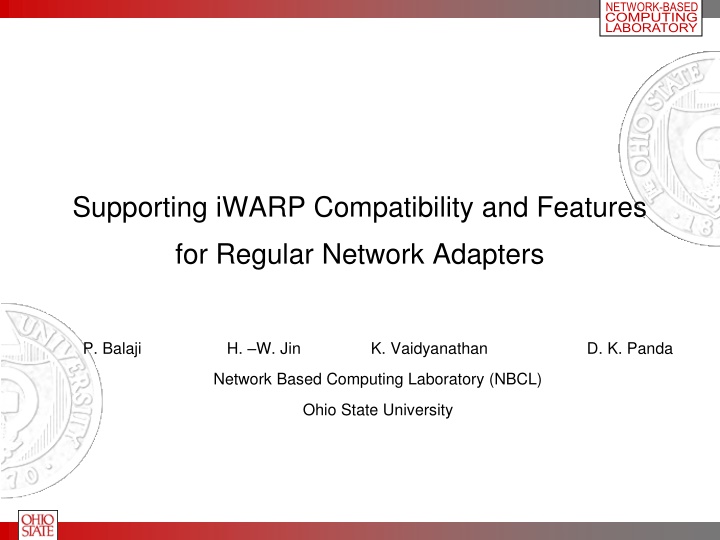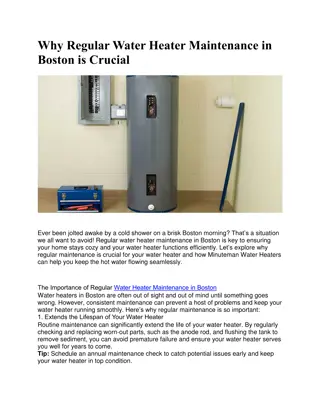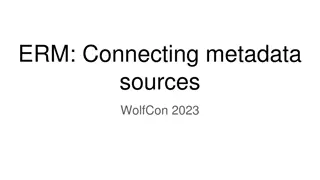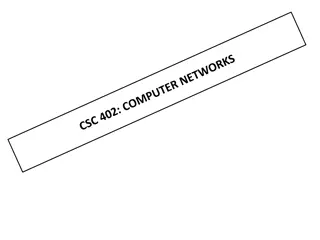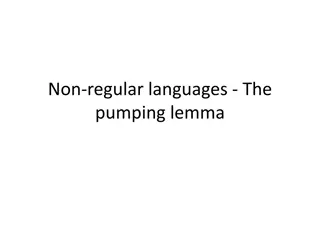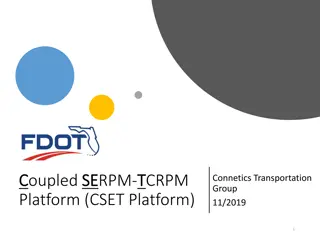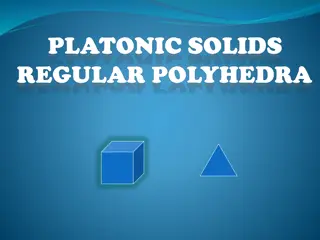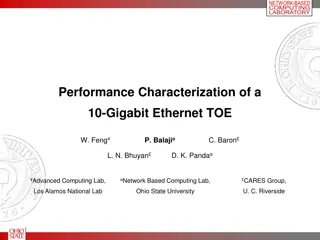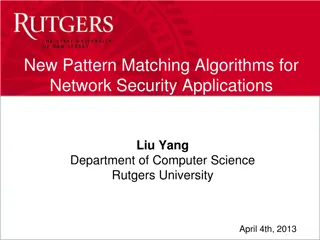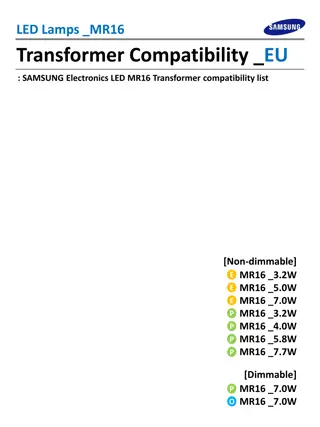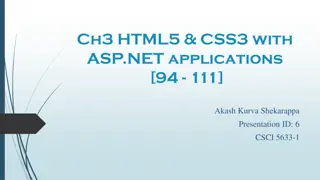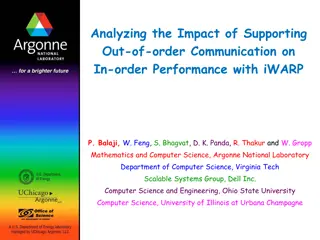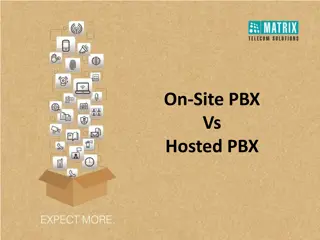Supporting iWARP Compatibility and Features for Regular Network Adapters
NETWORK BASED COMPUTING LABORATORY: This project focuses on enhancing regular Ethernet adapters to support iWARP compatibility, addressing performance issues and introducing advanced features for network communication. Technologies like TCP Offload Engines and iWARP-aware adapters are explored to optimize network infrastructure and achieve high performance
Download Presentation

Please find below an Image/Link to download the presentation.
The content on the website is provided AS IS for your information and personal use only. It may not be sold, licensed, or shared on other websites without obtaining consent from the author.If you encounter any issues during the download, it is possible that the publisher has removed the file from their server.
You are allowed to download the files provided on this website for personal or commercial use, subject to the condition that they are used lawfully. All files are the property of their respective owners.
The content on the website is provided AS IS for your information and personal use only. It may not be sold, licensed, or shared on other websites without obtaining consent from the author.
E N D
Presentation Transcript
NETWORK BASED COMPUTING LABORATORY Supporting iWARP Compatibility and Features for Regular Network Adapters P. Balaji H. W. Jin K. Vaidyanathan D. K. Panda Network Based Computing Laboratory (NBCL) Ohio State University
NETWORK BASED COMPUTING LABORATORY Ethernet Overview Ethernet is the most widely used network infrastructure today Traditionally Ethernet has been notorious for performance issues Near an order-of-magnitude performance gap compared to other networks Cost conscious architecture Most Ethernet adapters were regular (layer 2) adapters Relied on host-based TCP/IP for network and transport layer support Compatibility with existing infrastructure (switch buffering, MTU) Used by 42.4% of the Top500 supercomputers Key: Reasonable performance at low cost TCP/IP over Gigabit Ethernet (GigE) can nearly saturate the link for current systems Several local stores give out GigE cards free of cost ! 10-Gigabit Ethernet (10GigE) recently introduced 10-fold (theoretical) increase in performance while retaining existing features
NETWORK BASED COMPUTING LABORATORY Ethernet: Technology Trends Broken into three levels of technologies Regular Ethernet adapters [feng03:hoti, feng03:sc, balaji04:rait] Layer-2 adapters Rely on host-based TCP/IP to provide network/transport functionality Could achieve a high performance with optimizations TCP Offload Engines (TOEs) [balaji05:hoti, balaji05:cluster] Layer-4 adapters Have the entire TCP/IP stack offloaded on to hardware Sockets layer retained in the host space iWARP-aware adapters [jin05:hpidc, wyckoff05:rait] Layer-4 adapters Entire TCP/IP stack offloaded on to hardware Support more features than TCP Offload Engines No sockets ! Richer iWARP interface ! E.g., Out-of-order placement of data, RDMA semantics
NETWORK BASED COMPUTING LABORATORY Current Usage of Ethernet Regular Ethernet TOE TOE Cluster Wide Area Networ k Regular Ethernet Cluster iWARP System Area Network or Cluster Environment iWARP Cluster Distributed Cluster Environment
NETWORK BASED COMPUTING LABORATORY Problem Statement Regular Ethernet adapters and TOEs are completely compatible Network level compatibility (Ethernet + IP + TCP + application payload) Interface level compatibility (both expose the sockets interface) With the advent of iWARP, this compatibility is disturbed Both ends of a connection need to be iWARP compliant Intermediate nodes do not need to understand iWARP The interface exposed is no longer sockets iWARP exposes a much richer and newer API Zero-copy, asynchronous and one-sided communication primitives Not very good for existing applications Two primary requirements for a wide-spread acceptance of iWARP Software Compatibility for Regular Ethernet with iWARP capable adapters A common interface which is similar to sockets and has the features of iWARP
NETWORK BASED COMPUTING LABORATORY Presentation Overview Introduction and Motivation TCP Offload Engines and iWARP Overview of the Proposed Software Stack Performance Evaluation Conclusions and Future Work
NETWORK BASED COMPUTING LABORATORY What is a TCP Offload Engine (TOE)? TOE stack Traditional TCP/IP stack Application or Library User Application or Library User Sockets Interface Sockets Interface TCP Data Path TCP IP Kernel IP Device Driver Kernel Device Driver Offloaded TCP Offloaded IP Network Adapter (e.g., 10GigE) Hardware Hardware Network Adapter (e.g., 10GigE)
NETWORK BASED COMPUTING LABORATORY iWARP Protocol Suite RDMAP ULP RDDP ULP RDMAP Feature Rich Interface In-order Delivery and Out-of- order Placement RDDP Middle Box Fragmentation MPA SCTP TCP IP Courtesy iWARP Specification More details provided in the paper or in the iWARP Specification
NETWORK BASED COMPUTING LABORATORY Presentation Overview Introduction and Motivation TCP Offload Engines and iWARP Overview of the Proposed Software Stack Performance Evaluation Conclusions and Future Work
NETWORK BASED COMPUTING LABORATORY Proposed Software Stack The Proposed Software stack is broken into two layers Software iWARP implementation Provides wire compatibility with iWARP-compliant adapters Exposes the iWARP feature set to the upper layers Two implementations provided: User-level iWARP and Kernel-level iWARP Extended Sockets Interface Extends the sockets interface to encompass the iWARP features Maps a single file descriptor to both the iWARP as well as the normal TCP connection Standard sockets applications can run WITHOUT any modifications Minor modifications to applications required to utilize the richer feature set
NETWORK BASED COMPUTING LABORATORY Software iWARP and Extended Sockets Interface Application Application Application Application Extended Sockets Interface Extended Sockets Interface Extended Sockets Interface Extended Sockets Interface High Performance Sockets High Performance Sockets User-level iWARP Kernel-level iWARP Sockets Sockets Sockets Software iWARP Sockets TCP TCP TCP (Modified with MPA) IP TCP IP IP Device Driver Device Driver IP Offloaded iWARP Device Driver Device Driver Offloaded TCP Offloaded TCP Offloaded IP Offloaded IP Network Adapter Network Adapter Network Adapter Network Adapter Regular Ethernet Adapters TCP Offload Engines iWARP compliant Adapters
NETWORK BASED COMPUTING LABORATORY Designing the Software Stack User-level iWARP implementation Non-blocking Communication Operations Asynchronous Communication Progress Kernel-level iWARP implementation Zero-copy data transmission and single-copy data reception Handling Out-of-order segments Extended Sockets Interface Generic Design to work over any iWARP implementation
NETWORK BASED COMPUTING LABORATORY Non-Blocking and Asynchronous Communication setsockopt() setsockopt() Post_send() Post_recv() write() Recv_Done() Async Thread Async Thread Main Thread Main Thread User-level iWARP is a multi-threaded implementation
NETWORK BASED COMPUTING LABORATORY Zero-copy Transmission in Kernel-level iWARP Memory map user buffers to kernel buffers Mapping needs to be in place till the reliability ACK is received Buffers are mapped during memory registration Avoids mapping overhead during data transmission User Virtual Address Space Physical Address Space Kernel Virtual Address Space Memory Registration Data Transmission
NETWORK BASED COMPUTING LABORATORY Handling Out-of-order Segments Data Placed Iwarp_wait() Application NOT notified Wait for Intermediate packets copy checksum socket buffers DMA INTR on arrival NIC Out-of-Order Packet arrives Data is retained in the Socket buffer even after it is placed ! This ensures that TCP/IP handles reliability and not the iWARP stack
NETWORK BASED COMPUTING LABORATORY Presentation Overview Introduction and Motivation TCP Offload Engines and iWARP Overview of the Proposed Software Stack Performance Evaluation Conclusions and Future Work
NETWORK BASED COMPUTING LABORATORY Experimental Test-bed Cluster of Four Node P-III 700MHz Quad-nodes 1GB 266MHz SDRAM Alteon Gigabit Ethernet Network Adapters Packet Engine 4-port Gigabit Ethernet switch Linux 2.4.18-smp
NETWORK BASED COMPUTING LABORATORY Ping-Pong Latency Test Ping-Pong Latency (Extended Interface) Ping-Pong Latency (Sockets Interface) 250 200 180 200 160 140 Latency (us) 150 Latency (us) 120 100 100 80 TCP/IP TCP/IP 60 User-level iWARP User-level iWARP 50 40 Kernel-level iWARP Kernel-level iWARP 20 0 0 1K 1 4 16 64 256 1 4 16 64 256 1K Message Size (bytes) Message Size (bytes)
NETWORK BASED COMPUTING LABORATORY Uni-directional Stream Bandwidth Test Bandwidth (Sockets Interface) Bandwidth (Extended Interface) 800 800 TCP/IP TCP/IP 700 700 User-level iWARP User-level iWARP Kernel-level iWARP Kernel-level iWARP 600 600 Bandwidth (Mbps) Bandwidth (Mbps) 500 500 400 400 300 300 200 200 100 100 0 0 1 16 Message Size (bytes) 256 4K 64K 1 16 Message Size (bytes) 256 4K 64K
NETWORK BASED COMPUTING LABORATORY Software Distribution Public Distribution of User-level and Kernel-level Implementations User-level Library Kernel module for 2.4 kernels Kernel patch for 2.4.18 kernel Extended Sockets Interface for software iWARP Contact Information {panda, balaji}@cse.ohio-state.edu http://nowlab.cse.ohio-state.edu
NETWORK BASED COMPUTING LABORATORY Presentation Overview Introduction and Motivation TCP Offload Engines and iWARP Overview of the Proposed Software Stack Performance Evaluation Conclusions and Future Work
NETWORK BASED COMPUTING LABORATORY Concluding Remarks Ethernet has been broken down into three technology levels Regular Ethernet, TCP Offload Engines and iWARP-compliant adapters Compatibility between these technologies is important Regular Ethernet and TOE are completely compatible Both the wire protocol and the ULP interface are the same iWARP does not share such compatibility Two primary requirements for a wide-spread acceptance of iWARP Software Compatibility for Regular Ethernet with iWARP capable adapters A common interface which is similar to sockets and has the features of iWARP We provided a software stack which meets these requirements
NETWORK BASED COMPUTING LABORATORY Continuing and Future Work The current Software iWARP is only built for Regular Ethernet TCP Offload Engines provide more features than Regular Ethernet Needs to be extended to all kinds of Ethernet networks E.g., TCP Offload Engines, iWARP-compliant adapters, Myrinet 10G adapters Interoperability with Ammasso RNICs Modularized approach to enable/disable components in the iWARP stack Simulated Framework for studying NIC architectures NUMA Architectures on the NIC for iWARP Offload Flow Control/Buffer Management Features for Extended Sockets
NETWORK BASED COMPUTING LABORATORY Acknowledgments
NETWORK BASED COMPUTING LABORATORY Web Pointers Network Based Computing Laboratory NBCL Website: http://www.cse.ohio-state.edu/~balaji Group Homepage: http://nowlab.cse.ohio-state.edu Email: balaji@cse.ohio-state.edu
NETWORK BASED COMPUTING LABORATORY Backup Slides
NETWORK BASED COMPUTING LABORATORY DDP Architecture Extended sockets API Connection management handled by the standard sockets API Data transfer carried out using two communication models Untagged Communication Model Tagged Communication Model Out-of-Order Placement; In-order Delivery Segmentation and Re-assembly of messages
NETWORK BASED COMPUTING LABORATORY DDP Untagged Communication Model SQ RQ SQ RQ
NETWORK BASED COMPUTING LABORATORY DDP Untagged Model Specifications Simple send-receive based communication model Receiver has to inform DDP about a buffer before hand When data arrives, it is placed in the buffer directly Zero-Copy data transfer No flow control guaranteed by DDP; application takes care of this Explicit message delivery required on the receiver side
NETWORK BASED COMPUTING LABORATORY DDP Tagged Communication Model SQ RQ SQ RQ
NETWORK BASED COMPUTING LABORATORY DDP Tagged Model Specifications One-sided communication model Receiver has to inform the sender about a buffer before hand Sender can directly read or write to the receiver buffer Zero-Copy data transfer No flow control required since the receiver is not involved at all No message delivery on the receiver side; only data placement
NETWORK BASED COMPUTING LABORATORY Out-of-Order Data Placement DDP allows out-of-order data placement Two segments in a message can be transmitted out of order Two segments in a message can be placed out of order A message cannot be delivered till all segments in it are placed A message cannot be delivered till all previous messages are delivered Reduced buffer requirements Most beneficial for slightly congested networks TCP Fast retransmit avoids performance degradation Out-of-order placement avoids extra copies and buffering
NETWORK BASED COMPUTING LABORATORY Segmentation and Reassembly DDP does not deal with IP fragmentation IP layer does IP reassembly and hands over to DDP Segmentation is tricky in DDP Message boundaries need to be retained unlike TCP streaming Sender performs segmentation while maintaining boundaries Receiver can perform reassembly as long as boundaries are maintained What about TCP segmentation/reassembly on intermediate nodes? Layer-4 switches such as Load-Balancers TCP aware; can assume TCP streaming semantics
NETWORK BASED COMPUTING LABORATORY Layer-4 Switches Client Load Balancer WAN Google Servers
NETWORK BASED COMPUTING LABORATORY TCP Splicing Load Balancing Application TCP/IP Stack with TCP Splicing Network Interface Card The TCP stack can assume streaming No one-to-one correspondence between the received segments and transmitted segments
NETWORK BASED COMPUTING LABORATORY Marker PDU Aligned Protocol DDP segments created by sender need not be retained TCP Splicing DDP header needs to be recognized If message boundaries are not retained, this is not possible ! Need a solution independent of message segmentation MPA Protocol Places strips of data at regular intervals Interval denoted by the TCP sequence number Each strip points to the DDP header
NETWORK BASED COMPUTING LABORATORY MPA Protocol DDP Header ULP Payload (if any) Segment Length Pad CRC DDP Header ULP Payload (if any)
